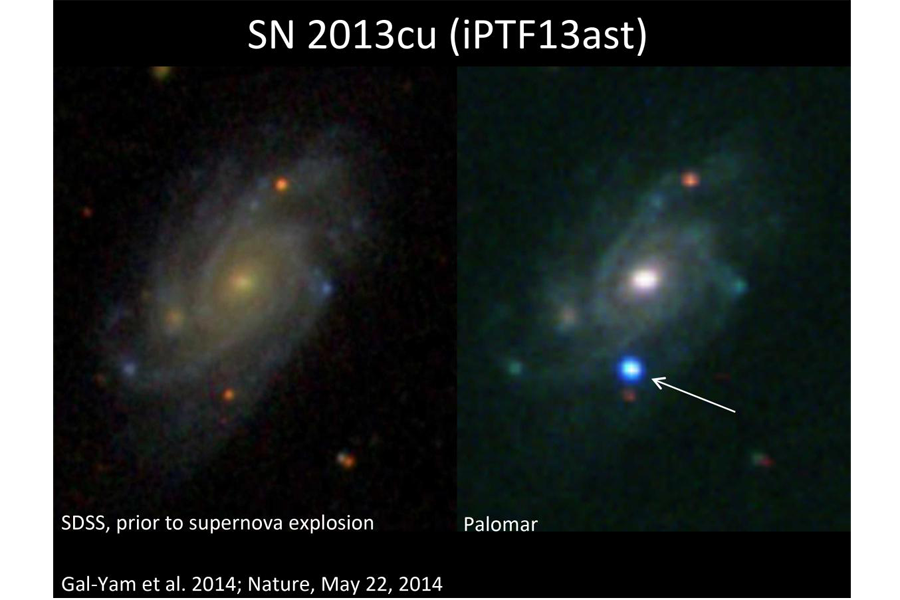Astronomers link space explosion to huge, mysterious star
Loading...
They’ve been identified as possible causes for supernovae for a while, but until now, there was a lack of evidence linking massive Wolf-Rayet stars to these star explosions. A new study was able to find a “likely” link between this star type and a supernova called SN 2013cu, however.
“When the supernova exploded, it flash ionized its immediate surroundings, giving the astronomers a direct glimpse of the progenitor star’s chemistry. This opportunity lasts only for a day before the supernova blast wave sweeps the ionization away. So it’s crucial to rapidly respond to a young supernova discovery to get the flash spectrum in the nick of time,” the Carnegie Institution for Science wrote in a statement.
“The observations found evidence of composition and shape that aligns with that of a nitrogen-rich Wolf-Rayet star. What’s more, the progenitor star likely experienced an increased loss of mass shortly before the explosion, which is consistent with model predictions for Wolf-Rayet explosions.”
The star type is known for lacking hydrogen (in comparison to other stars) — which makes it easy to identify spectrally — and being large (upwards of 20 times more massive than our Sun), hot and breezy, with fierce stellar winds that can reach more than 1,000 kilometres per second. This particular supernova was spotted by the Palomar 48-inch telescope in California, and the “likely progenitor” was found about 15 hours after the explosion.
Researchers also noted that the new technique, called “flash spectroscopy”, allows them to look at stars over a range of about 100 megaparsecs or more than 325 million light years — about five times further than what previous observations with the Hubble Space Telescope revealed.
The research was published in Nature. It was led by Avishay Gal-Yam of the Weizmann Institute of Science in Israel.
Source: Carnegie Institution for Science
Originally published by Universe Today.
Want to stay on top of all the space news? Follow @universetoday on Twitter
Elizabeth Howell is the senior writer at Universe Today. She also works for Space.com, Space Exploration Network, the NASA Lunar Science Institute, NASA Astrobiology Magazine and LiveScience, among others. Career highlights include watching three shuttle launches, and going on a two-week simulated Mars expedition in rural Utah. You can follow her on Twitter @howellspace or contact her at her website.







